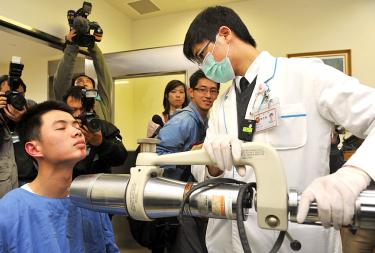Q. We noticed that when you were planting the tree, there was a different Warren Buffett, different from the persona of an investor or a philanthropist. You seemed to open up in a different way.
A. Well, I like to think that I open up even otherwise (laughs). But part of life is to plant trees that other people will sit under. Somebody planted a tree for me long ago in the form of an educational institution and I sat under that tree, metaphorically. The same happened in one area after another in my life.
Q. The chairman of Infosys, Narayana Murthy, talks of compassionate capitalism. Is philanthropy going to be the compassionate side of capitalism?
A. I think philanthropy should be part of humanity. I don't relate it to capitalism or to business. When you have everything that you possibly could need yourself and other people need what you have that is of no use to you and has enormous use to them, I think you need to do something about it. Philanthropy till now largely has been an individual effort. As it becomes bigger, it might become an institutional effort with its own systems, processes, checks and balances. Will it take away from the spontaneity of the individual effort that it is today?
No, I don't think so. What we are encouraging is more individual effort. We are not asking people to join us or to give to what we believe in. We are encouraging people to enjoy giving and do it their own way. They can do it when they want, with whom they want. Maybe they can learn from each other. I have learnt from other people I have met. It's not designed to centralize anything. It's designed to encourage people individually and in their families to do the things we found so enjoyable.
In India, the greatest potential is in the infrastructure sector. Would you be looking at gas, power, steel, utilities in general for investment? You did say on Tuesday that you would look at making one big investment a year in India.
I would like to make a
big one, but it will have to
be in a field that I understand. A company in which I
have a good feeling about
where it will be in 5/10 years, competitively.
From what we have read, gut instinct plays a large role in your investment decisions. Many investors like to kick the tiles, go to the shop floor to see if an investment makes sense. Are you that kind of an investor?
No, I look at the people who run it. I would not know what to do if tomorrow morning you make me in charge of aplant (laughs). But I do know who should be in charge of it.
Your only investment in India so far is in Bangalorebased TaeguTec. Would you future investments here be in such specialist, high-end manufacturing companies?
These kind of companies will do very well. But there are a whole group of companies that will do well in India. So, I will not limit my interest to something like this.


































